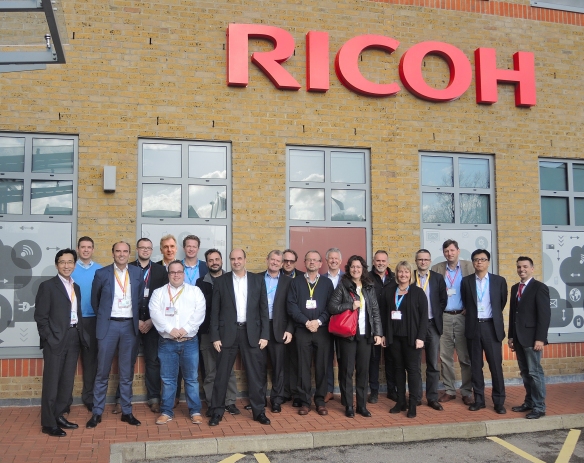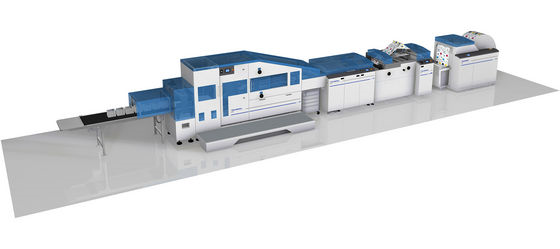
Graham Moore -Director Business Development, Ricoh Europe
Since the launch of Ricoh’s Ricoh Pro C™ 7100X digital press we have found that many Print Service Providers (PSPs) have been able to offer a new level of value added capabilities to their clients.
The key to this is the highly accessible and cost effective fifth colour on the cut sheet digital press.
PSPs are discovering just how the fifth colour can produce an amazing array of eye-catching effects, particularly in combination with speciality media. By using the 5th colour station they can enhance their print offerings by printing on a variety of speciality media such as black or coloured sheets, transparency or metallic media.
Adding a fresh dimension
PSPs can choose the fifth colour to add a fresh dimension to all elements of print, from books and brochures to business cards, invitations, posters and packaging.
The ability to print additional colours, other than CMYK, such as clear gloss and white toner provides added value. So does offering spot gloss, flood, and watermarks along with printing on coloured and clear media inline, with no need for separate costly and time consuming processes.
We have seen customers develop some very special applications around the fifth colour supported by an ever growing choice of substrates and value added software products such as Color-Logic.
A number of examples have really stood out for me are as follows.
- white toner used in combination with metallic board to create a hot-foil effect on the HarperCollins childrens book covers we demonstrated at drupa
- Black envelopes such as those from Blake Envelopes which we used to create impact as part of our own drupa marketing campaign.
Here’s how the 5th colour station is helping some Ricoh customers to strengthen relationships with their clients.
Pushing the boundaries with some amazing results
It is the flexibility of the Pro C7100X that appealed to Dutch operation Benda Drukkers. They use a lot of unusual paper types for their portfolio of services ranging from business stationery to brochures and books. With the white toner Benda Drukkers also now produces a high image quality on coloured media.
Loesje Benda, owner of Benda Drukkers, says the operation can now offer existing customers a broader portfolio. It can print on all kinds of special paper stocks, as well as envelopes and even plastics. This versatility has also attracted a new audience of, for example, graphic designers.
The business has been able to bring in new clients as a result of its Pro C7100X. And, by inspiring people to use the new possibilities in creative ways, its print volume is on the rise as well.
He says that adding white and clear enables it to produce all kinds of special effects that no regional competitors can match. It allows them to get ahead of the game and create new applications and opportunities.
More about Benda Drukkers
Another fan is family owned printer Offsetpaino L.Tuovinen Ky, Finland. It printed its own business cards on 0.3mm birch veneer using white and CMYK.
More about Offsetpaino L.Tuovinen Ky
To learn more about the fifth colour please watch https://youtu.be/r73ZlELmk_I
For application ideas please visit ..
https://ricohppshowcase.wordpress.com/2016/05/20/amazing-5th-colour-applications-at-drupa/











































